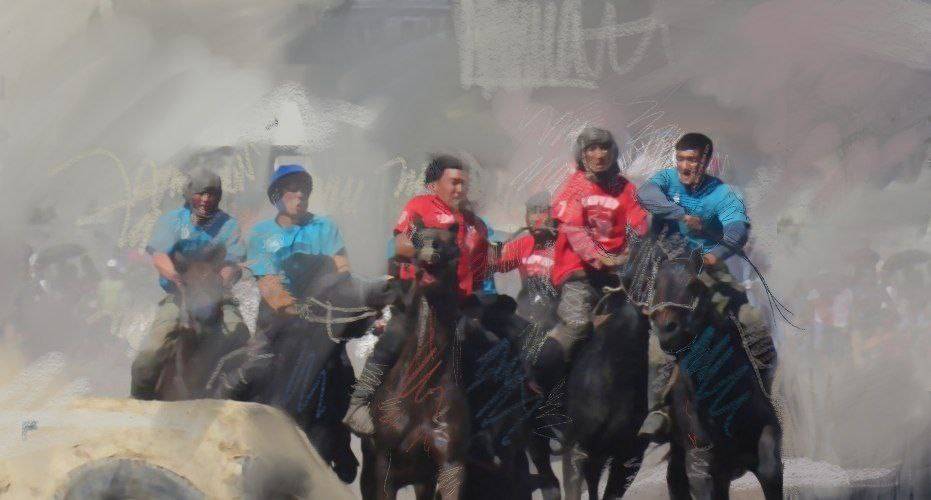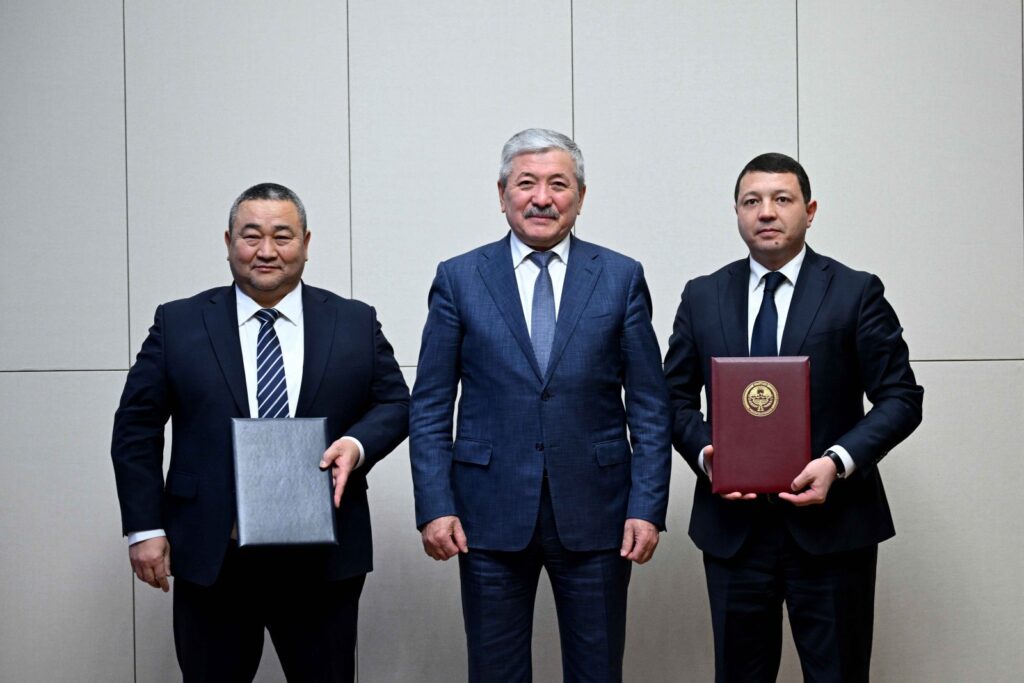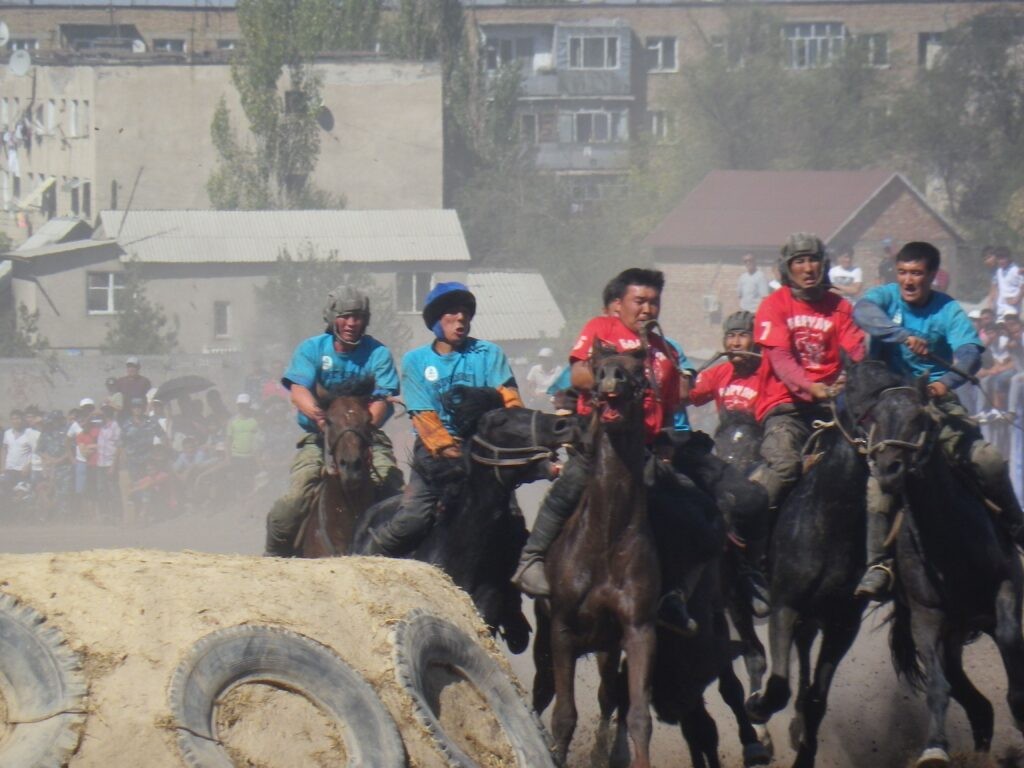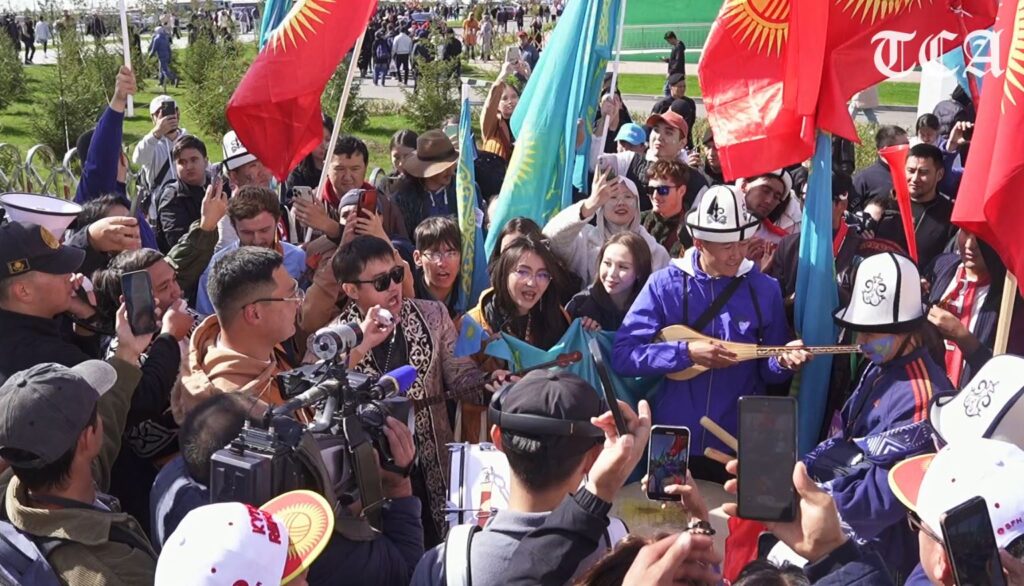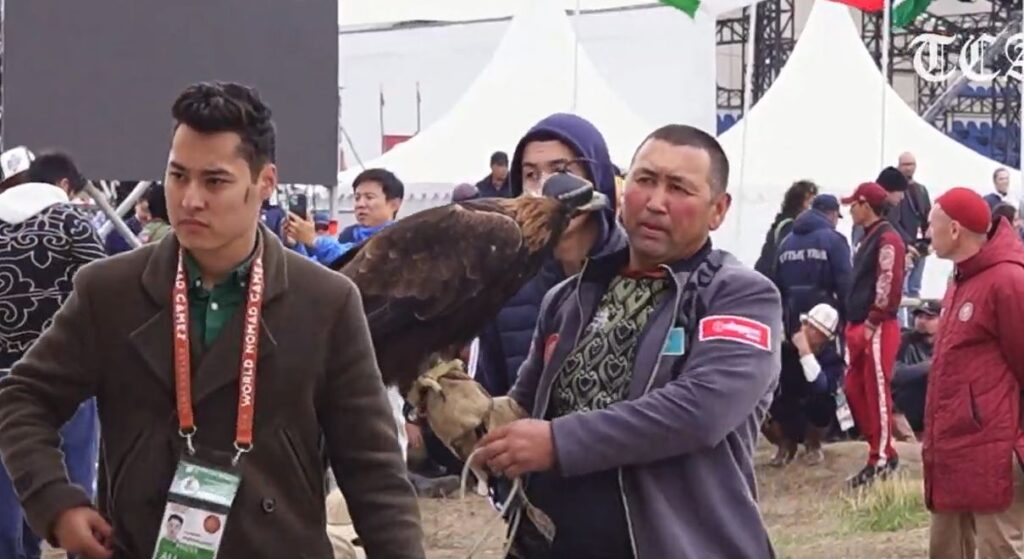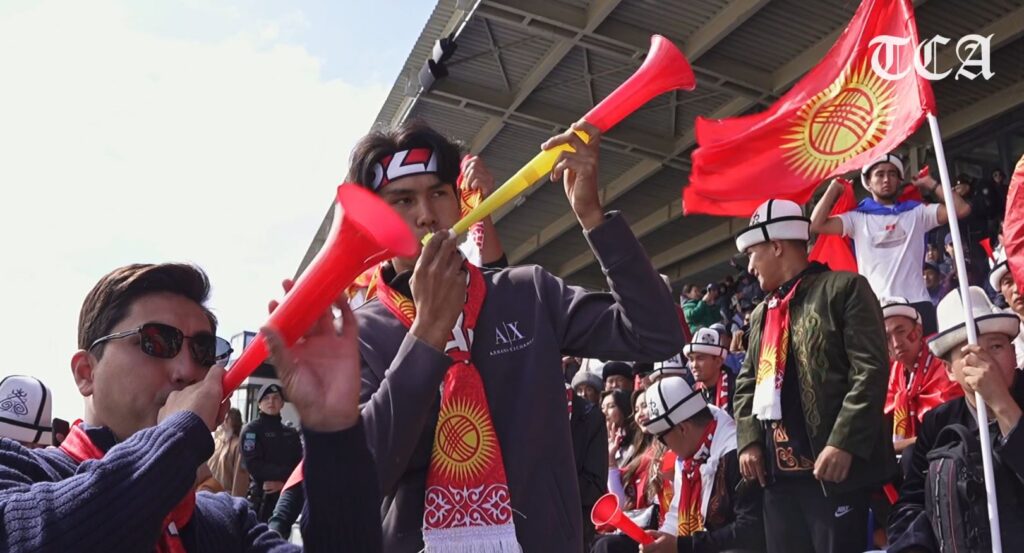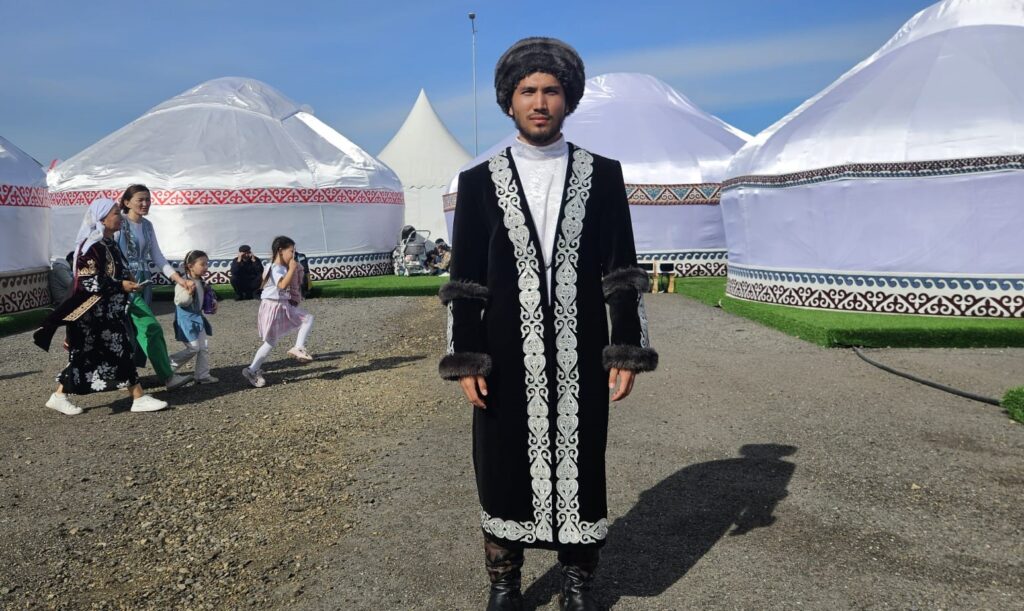The 5th World Nomad Games, set to be hosted in Astana from September 8-13, is Central Asia’s largest national sports competition and, complemented by unique cultural and scientific programs, attracts participants and spectators from throughout the world. As reported by TCA, there is a distinctive festive fizz in the air as the city prepares to welcome visitors, with streets, shopping centers, public spaces and even buses already festooned with flags and colorful decorations.
Ablai Kondybaev, the Deputy Head of the Directorate responsible for preparing and organizing the 5th World Nomad Games, spoke to The Times of Central Asia about how the event allows visitors to experience the spirit of the Great Steppe.
TCA: The geographical scope of the Nomad Games is steadily expanding worldwide. How many countries will participate this year and how many tourists and spectators are expected to attend?
AK: The Games have a ten-year history. Having originated in Kyrgyzstan in 2014, they have since been held three times in the Kyrgyz city of Cholpon-Ata and on the shores of Lake Issyk-Kul. Over the relatively short period since it began, the event has grown dramatically. The first Games attracted participants from 19 countries mainly from Central Asia where there is a historic nomadic culture, whereas the 4th Nomad Games hosted by Iznik, Turkey, in 2022, saw athletes competing from 81 countries.
It’s very interesting to track the geography of engagement. In previous Games, for example, countries such as New Zealand and Madagascar participated. Superficially, they have nothing to do with nomadic culture, yet consider themselves descendants of nomads. Such things bring us closer together; in the distant past, all humanity was nomadic. To date, we have received applications for participation from 89 countries to compete in this year’s event.
The Nomadic Games are a new and interesting phenomenon, offering unique and highly engaging spectacular sports, unfamiliar and exotic to European and Western audiences. As such, the Games are becoming increasingly popular abroad. Today’s geographical representation of athletes is expansive, with countries including Venezuela, Ireland, Gambia, and Brunei participating for the first time. For ten years, countries from literally all continents have joined the event and perhaps in the future, we will reach a point where interest in our national sports is on a par with the Olympics or soccer championships.
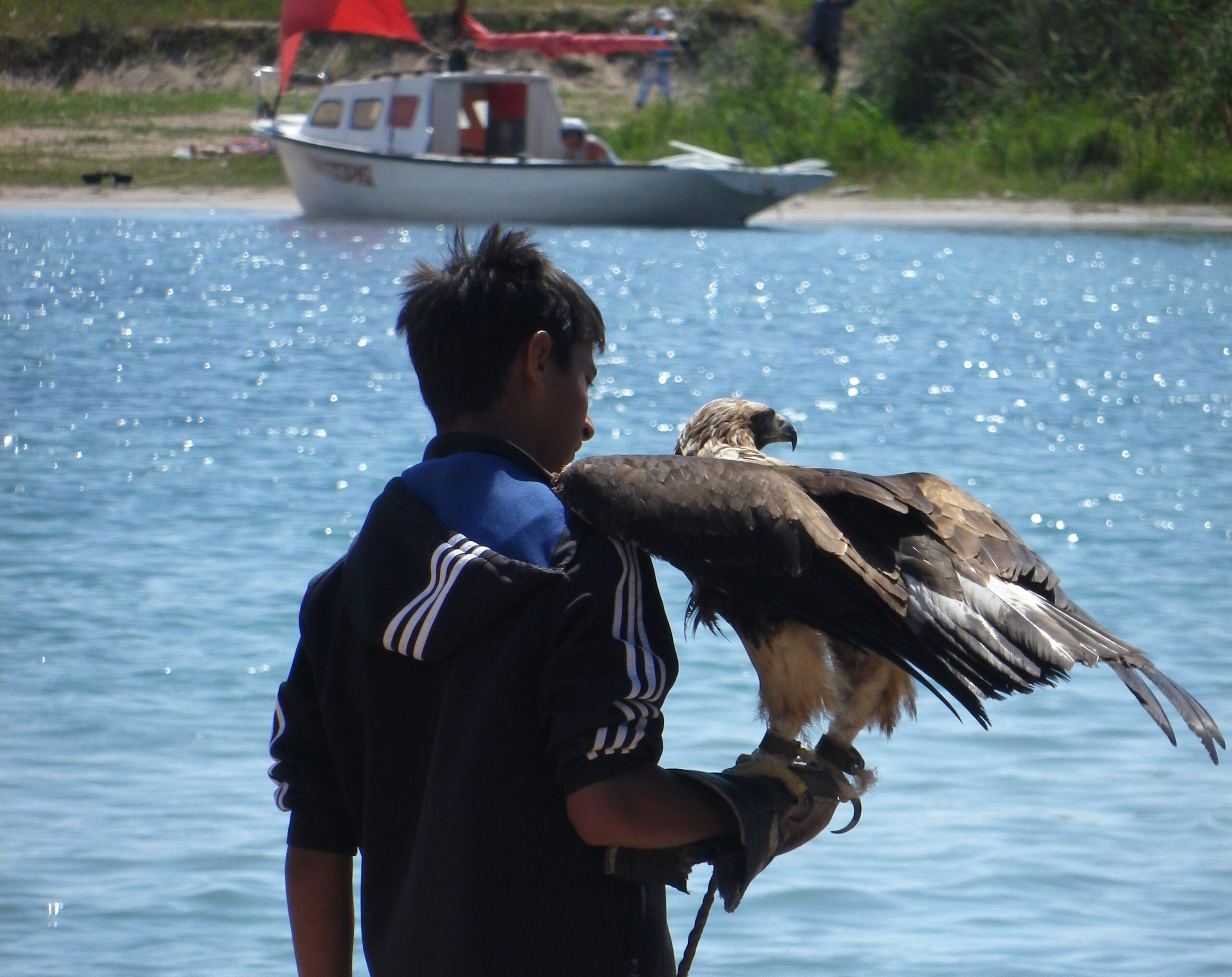
Falconry in Cholpon-Ata, Kyrgyzstan; image: Stephen M. Bland
TCA: Is it significant that the month of September was chosen for the Games?
AK: Absolutely. September is when nomads traditionally celebrate the completion of the migration with their caravan of yurts and animals from their summer to winter camp with a toi ; an event comprising feasts, rituals, games and competitions.
TCA: Which competitions generate the most excitement amongst spectators: Horse racing, archery, wrestling?
AK: Nomadic life is directly related to horses, and year on year we observe how people who know nothing about steppe culture are particularly fascinated by our equestrian sports. Always spectacular and challenging, they take the audience’s breath away. But to single out some separate competitions is very difficult; they are all interesting. Each is unique, and each has its audience and fans. Nevertheless, according to ticket sales, it is obvious that horse races – baige – are extremely popular.
Kazakhs have long held horse races at major events and competitions. We have seven courses in the program. Three are flat races, similar to those held worldwide and in particular, in England, Arab countries and Japan. The other four, Kunan baige, Alaman baige, Top baige, and Ұshkyr baige, are traditional nomadic races over different distances and terrains. There are also equestrian team competitions, the most famous of which are Kokpar and Kokboru; traditional games akin to polo played with sheep or goat carcasses. Long popular among Turkic people, especially in Central Asia, these fast and furious competitions attract record numbers of spectators. According to forecasts, the finals of Kokpar and Kokboru will be held between Kazakhstan and Kyrgyzstan.
I should also mention Zhamby Atu, a mesmerizing and highly skilled competition involving horseback archery traditionally played by warriors on festive occasions. Other riding events include Audaryspak and Tehre Ilu, in which the rider must pick up a bag of coins whilst on the gallop.
Equestrian events aside, the Games feature traditional wrestling events – Kazakh Kuresi , Kyrgyz Alysh, as well as Tatar and Uzbek forms of the sport – alongside contests of strength and power, such as weightlifting sports developed in Scandinavian countries, and, of course, competitions in traditional archery. Competitions in hunting with birds of prey, are always of great interest and in high demand amongst foreign guests.
Another sport which never fails to delight audiences is Arkan tartys, an emotionally charged tug-of-war, and Asyk Atu , a game of dice; both familiar to everyone’s childhoods. Intellectual sports also feature, but unfortunately, chess tournaments and board games such as Togyzkumalak from Kazakhstan, Owari from West Africa, and Mangala from Turkey, are not open to spectators.
TCA: What distinguishes the Nomad Games from traditional sporting competitions and how do they impact on interest in Kazakhstan and nomadic culture?
AK: Thanks to the Games, ethno-sports are developing all over the world. The World Nomadic Games contribute to the establishment of common rules of competitions historically conceived in nomadic countries. One of our key tasks is to systematize the rules and adjust the details to reach a common understanding and give impetus for further development. Of course, first and foremost is attracting spectators. Given the high volume expected from Kazakhstan and Central Asian regions and because travel agencies, as in the UK, sold out tickets for the Games within six months, we anticipate audience numbers to reach 100,000. This figure will also be swelled by the recent announcement that Kazakhstan’s most famous singer, Dimash Kudaibergenov will perform at the Games on 13-14 September.

Ablay Kondybayev, the Deputy Head of the Directorate responsible for preparing and organizing the 5th World Nomad Games
TCA: What can you tell us about the activities offered by the ethno-aul, created within the framework of the Games on a ten-hectare site close to the Kazanat hippodrome?
AK: The Games consist of three areas – sport, culture, and science. The ethno-aul is the main site for cultural events, which follows the concept that the Nomad Games includes participation by of all Kazakhstan’s regions to allow visitors to immerse themselves in the the country’s heritage.
The ethno-aul will be launched on the first day of the Games with Shattyk kerueni, a grand parade showcasing the cultural heritage of the Kazakh people, and thereafter, host evening performances by artistic ethno-collectives, concerts, regional competitions of aytys (folk poetry), exhibitions of unique work by some 200 master craftspeople, fairs and bazaars selling souvenirs and jewelry, masterclasses for visitors , children’s playgrounds, and of course, national cuisine. General admission is free.
Special attention is being paid to the younger generation, as one of the goals of the Games is to pass on traditions and revive national sports and national culture. We can already see a growing interest amongst young people in archery. Equestrian sports have become particularly popular, and to meet demand clubs are opening in Almaty and Astana. Reduced rates have been set for children attending the Games and to further develop sport amongst young people, we have signed a memorandum with UNICEF on several areas of cooperation.
TCA: What level of service awaits participants and tourists alike?
AK: We are currently putting the finishing touches in place. I think that everyone who attends the opening ceremony at the Astana Arena will be pleasantly surprised by the work of Kazakh producers and directors and moreover, get a true sense of our country’s hospitality and an authentic experience the nomadic spirit.
